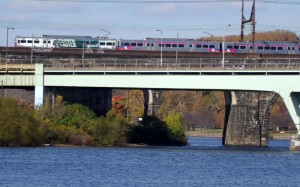Philadelphia’s current affordable housing crisis is hardly unique in modern America, but the city’s status as among the nation’s poorest large cities makes the challenge especially acute. Mayor Cherelle Parker’s proposed solution, detailed March 24th this year, is promising but problematic. Facing not just traditional obstacles of costs and political will, the proposal has been unveiled during a period of particular federal hostility toward subsidies of any kind, not the least for low-income buyers and renters.
According to a 2020 Pew Foundation report, Philadelphia’s housing costs are low relative to other peer cities, but because of its high level of poverty, the proportion of its households considered cost-burdened (spending at least 30 percent of its income on housing) is also high. The problem is particularly acute for renters with incomes below $30,000 per year, 88 percent of whom are cost-burdened, with 68 percent severely cost-burdened, meaning they spend at least 50 percent of their income on housing.
Parker’s $2 billion plan, anticipating funds drawn primarily from municipal bonds, aims to create and preserve 30,000 housing units during her first term in office. Spread primarily through seven distinct programs, the effort would, among other things, turn publicly held land (through the city’s currently underperforming land bank) over to private investors for new development while also also providing grants for repairs, subsidies for new mortgages, and payments for back rent. Criticized by the Philadelphia Coalition for Affordable Communities, formed in 2014, for not doing enough to reach low-income residents, Parker has defended her approach supporting households that do not live in poverty by official measurements but are still struggling. Often referred to as “middle neighborhoods” of the kind Parker represented when she was in city council, these areas, though stable, have issues—most usually related to the age of the housing stock—and are not usually eligible for government subsidy. Assisting these areas could help reduce demand and bring down prices in areas prone to gentrification.
Additional support for Parker’s approach can be found in light of a parallel crisis in public transit. As the Public Citizen recently argued, Philadelphia’s leaders could boost SEPTA’s operational health by encouraging the development of more housing near what it calls the city’s high-quality transit infrastructure. Such investment where housing density is low, in such “middle neighborhoods” as Germantown and Chestnut Hill, for instance, could well boost ridership and help sustain the system, an approach the Citizen buttresses with the support of a study from the moderate Republican Niskanen Center. No less problematic than federal funding, such broad-based thinking is still worth the effort for any such important program in housing development that is likely to stretch out for years.
It would be up to public housing, then, to expand its historic role in meeting the needs of the city’s poorest neighborhoods. Public funding over time has failed to keep up with demand for space or upkeep on the stock that already exists. Currently some 100,000 people appear on various wait lists. Significantly, then, the Philadelphia Housing Authority has launched its own ambitious $6.3 billion plan, concentrated on remaking its entire housing portfolio while also adding thousands of new subsidized units through new construction and acquisition of privately held properties. PHA President Kelvin Jeremiah speaks optimistically about working with the Trump administration to draw on existing program funding such as Section 8 housing vouchers, which would be used for reconstructed units. Such funding, however, could well not be available according to recent reports. HUD Secretary Scott Turner took the lead in Opportunity Zone funding in the first Trump administration, so there might be better hope in attracting private investment for new construction in underserved areas.
In all likelihood, Philadelphia will muddle through the current housing crisis. This would be a good time, however, to do more than muddle by rethinking just where and how new housing policies can help keep Philadelphia a “city of homes.” Well before Trump’s election, Drexel University’s Bruce Katz was promoting a “new localism,” which would help metropolitan regional economies become less reliant on federal funding. Not incidentally, he has been instrumental in forming a new national housing crisis task force, and the preliminary ideas generated in this process should become a part of the dialogue informing Philadelphia’s affordable housing campaign.
No doubt national housing policy has become a crucial area of concern when its future remains so uncertain under the Trump administration. As Philadelphia’s leadership grapples with the challenge, we can only hope it takes the opportunity to make the most of a difficult situation to consider innovations in its approach that could help free the city from additional uncertainties created in Washington and realize its ambitious goals at home.
